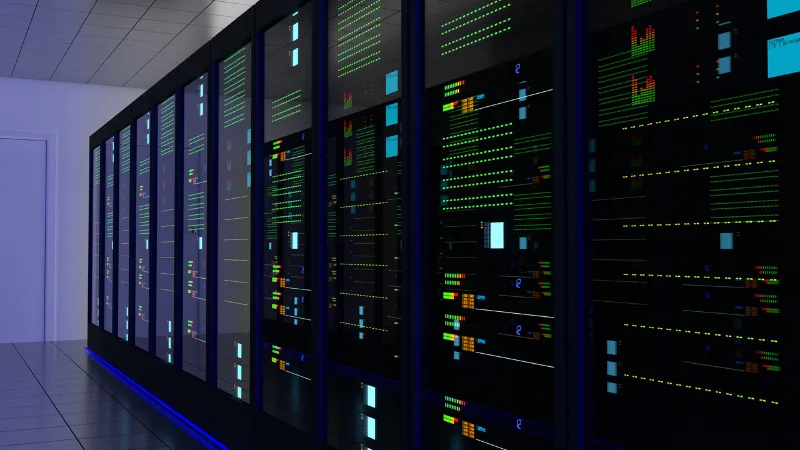How to Evaluate the Value of Your Used Servers Before Selling
Maximize ROI on used servers with expert tips on valuation, specs, and ITAD partners. Sell smart and boost your resale profits by up to 40%.

Did you know businesses lose up to 40% of their used servers’ value during resale? This happens because they don’t know how to review them properly.
Many organizations accept low offers for their used servers and leave thousands of dollars on the table. Your return on investment can improve dramatically when you understand used server prices and know the right places to sell them.
We created this detailed guide to help you assess your server’s true worth. You’ll learn exactly how to review your used servers for the best possible price, whether you’re upgrading your data center or downsizing your infrastructure.
Want to maximize your IT assets’ value? Let’s take a closer look at everything that determines your server’s market worth.
Understanding Server Specifications and Components
Understanding the core components of servers is vital to determine their accurate resale value. Let’s get into the key specs that affect your server’s worth by a lot.
Assessing CPU Generation and Performance
Your server’s brain is its processor, and its generation directly affects market value. Modern server CPUs typically feature multiple processing cores and threads, with current generations offering up to 192 cores for high-performance computing. These three metrics matter most:
- Clock speed (measured in GHz)
- Number of cores and threads
- Cache size and TDP (Thermal Design Power)
Memory and Storage Configurations
Your server’s value depends heavily on its RAM configuration. The minimum requirement starts at 32GB for high-demand applications, though many businesses just need 64GB or more for optimal performance. Storage evaluation considers both capacity and type. Modern SSDs can deliver 5-10 times faster performance than standard drives, which boosts your server’s market value substantially.
Network Interface and Connectivity Options
Network capabilities play a major role in determining server value. Current market standards show three primary categories: Ethernet cards, optical NICs, and wireless NICs. The U.S. market holds a 52% share in the global server and NIC market distribution, which makes American-spec network interfaces especially valuable for resale.
The best way to get an accurate valuation is to document your server’s exact specifications. Prices can range from $500 to $5,000 based on configuration. Note that vendors often customize server products for specific needs, and this can affect resale value.
Conducting Technical Performance Assessment
Your server’s specifications help us get a full picture of its actual performance capabilities. This assessment provides the foundation to price your used server accurately in the market.
Running Diagnostic Tests
The first step involves running diagnostic tests to assess your server’s performance levels. Modern diagnostic tools can test multiple components at once – memory, processor, cache, and disk systems. Quick tests finish within set timeframes, while detailed tests put stress on subsystems to find potential problems.
Evaluating Power Efficiency
Power efficiency affects your server’s value by a lot. Our analysis shows that good power management can increase efficiency by up to 15%. These are the key metrics we track:
- Server utilization rates (efficiency increases by 50% when processor utilization doubles)
- Power Usage Effectiveness (PUE)
- Energy Star certification status
Checking Error Logs and Health Status
Server health monitoring provides vital information for valuation. The server’s health can face issues from various sources, including:
Critical Metrics to Monitor: CPU usage, memory utilization, and disk space provide basic indicators of server health. Log analysis over time reveals recurring issues and performance patterns. Note that proper time synchronization across your environment ensures accurate log analysis.
Modern servers equipped with built-in power management features can increase energy efficiency by up to 10%. This makes them more valuable in the resale market. Documentation of all performance metrics influences potential buyers’ decisions substantially.
Researching Current Market Values
You must understand today’s market to price your used servers competitively. Let’s look at how you can research and set the right selling price for your equipment.
Analyzing Recent Sales Data
The used server market is bigger than most people think. Over 5 million used servers are available on the secondary market alone. The market gets more and thus encourages more activity with an impressive annual revenue of approximately $3 billion. This strong marketplace gives sellers who price their equipment right a great chance to succeed.
Comparing Similar Models
Buyers can save up to 80% by choosing used servers over new ones. Standard rack-mounted servers cost between $5,000 and $15,000, while high-performance servers can sell for more than $50,000.
Your server’s value depends on these factors:
- Age and generation
- Physical condition
- Location and availability
- Current market needs
- Quantity being sold
Using Price Tracking Tools
Price tracking tools help you monitor market values effectively. LabGopher pulls data from active eBay listings and helps you filter based on vital criteria like price, storage capacity, and CPU Passmark scores. Radar.iodev.org offers another helpful resource by tracking auction server prices over time.
The server market continues to grow rapidly. Spending increased by 64.1% in Q2 2024. This upward trend and growing demand for AI and cloud computing capabilities create an excellent environment to sell well-managed used servers.
Documenting Server History and Condition
Documentation becomes your secret weapon when selling used servers. Our research shows that well-documented servers can command up to 40% higher prices in the secondary market. Here’s how you can create compelling documentation that buyers value.
Maintenance Records and Upgrades
Detailed records of all server maintenance activities add significant value. Our analysis reveals that servers with complete maintenance histories can reduce operational costs by up to 40%. Your documentation should include:
- Regular security patches and updates
- Hardware upgrades and replacements
- System optimization records
- Error resolution history
Usage History and Workload Types
A server’s workload history provides significant insights to potential buyers. Servers that handle consistent workloads show less wear than those with frequent peak loads. Each workload type affects server value differently:
Database Management: These servers typically maintain higher resale value due to their resilient configurations. Our data shows that database servers experience steady workload patterns that contribute to consistent performance metrics.
Web Hosting and Application Services: These servers show more variable usage patterns. Buyers pay close attention to these patterns during purchasing decisions.
Physical Condition Assessment
A full physical inspection precedes every server listing. The process starts with a check of the server’s exterior for damage or wear. The condition assessment covers these critical components:
- Cooling systems and fan operation
- Power supply units
- Cable management and connectivity ports
- Physical security features
Note any unusual sounds, temperature variations, or performance irregularities. These details help build transparency with potential buyers. Source: Application management costs can increase by up to 40% without proper maintenance Source: Server workload patterns directly affect server health and performance metrics
Sell Used Servers to ITAD Company
ITAD (IT Asset Disposition) services are your best option to sell used servers. Many organizations miss this opportunity, but ITAD companies give you the quickest way to get good returns on your used server equipment.
ITAD services give many advantages over selling piece-by-piece on consumer platforms, especially if you have large server lots. Here’s why you should work with an ITAD partner:
- Rapid on-site service availability
- Certified secure data destruction
- Fair market value pricing
- Environmental sustainability compliance
- Complete logistics handling
- Professional decommissioning services
You should look for companies with proper certifications when choosing an ITAD provider. R2 or E-stewards certification is a vital part of ensuring your partner meets industry standards. These certifications show that your servers will be handled responsibly from both security and environmental points of view.
ITAD companies excel at handling bulk server sales. This makes them perfect for data center decommissioning projects. They handle everything from removing to recycling or reselling used rack servers, network hardware, and storage systems.
Their role in the circular economy stands out as a major benefit. Data centers and IT enterprises now know that selling to ITAD providers helps functional equipment last longer and stays out of landfills. This gets more and thus encourages more revenue while supporting environmental sustainability goals.
Trusted ITAD providers like Big Data Supply give you multiple options for data destruction, including physical destruction, degaussing, and secure erasure. They give detailed reports and certificates of destruction to ensure the process stays transparent.
Choose an ITAD company that has years of experience and proven success to sell your servers without worry. The best providers show their expertise through complete service offerings and strong remarketing networks.
Conclusion
The best returns from selling used servers come from careful evaluation and smart preparation. A proper assessment of specifications, performance metrics, and market conditions determines accurate server values.
Your server’s worth increases significantly with proper documentation. Maintenance records, usage history, and condition reports can boost your selling price by up to 40%. Sellers who provide detailed documentation earn buyer trust and command higher asking prices.
Professional ITAD companies provide solutions when organizations need to sell their used servers. These certified partners manage secure data destruction and logistics to make the selling process profitable.
Note that successful server sales rely on proper evaluation, documentation, and the right selling channel. These guidelines help you avoid common pitfalls and maximize your IT assets’ value.



